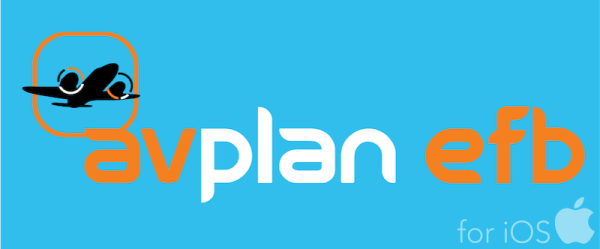![Basic type information example]() Basic type information example
Basic type information exampleThe Basic Information window allows you to enter information for the aircraft type:
| |
Type information |
| Type Name |
e.g. C182T or P2002 |
| ICAO Type Identifier |
e.g. PA44 or EC30. Required when submitting a plan to NAIPS/IFIS. The ICAO type identifier for your aircraft can be found at: http://www.icao.int/publications/DOC8643/Pages/Search.aspx NOTE: If your aircraft has no ICAO type code, enter ZZZZ |
| Description |
e.g. Cessna 182T or Tecnam Sierra |
| Performance category |
Select whichever reflects the normal speed in approach configuration (Note: this is NOT cruise speed) |
| Wake turbulence category |
Select most appropriate from a list of MTOW levels. |
| Pilots Operating Handbook .PDF URL |
e.g. http://www.jabiru.net.au/Manuals/Pilot%20Operating%20Handbooks/J160-C_Section0-9_Rev3.pdf. This will make that document available for easy download and viewing in the POH option within the Text tab |
| Is this aircraft a helicopter? |
If the aircraft is specified as a helicopter, then the Nearest Items view will display nearby helicopter landing sites. If this setting is set to NO, then HLSs are hidden. |
| Aircraft icon |
Select from the various icon options. This icon will be displayed on the map when this particular aircraft type is selected in an open flight plan. To change the icon displayed when no flight plan is open, you’ll need to change the Default Icon in User Settings. |
|
Units |
| Weight Units |
The weight units used for passengers, baggage or cargo to be loaded in the aircraft (kg or lbs) |
| Fuel Units |
The units used by the fuel calculations – both in filling the fuel tanks and the fuel burn calculations (Litres, US Gallons or lbs |
| Fuel Type |
Select between AVGAS, AVTUR, MOGAS or OTHER |
| Fuel Specific Gravity |
Used by AvPlan to calculate the weight of the fuel load. This will be entered automatically when a Fuel Type is selected. Only adjust this if you know why you need to |
| Fuel Cost |
Will allow flight costings in the flight plan or stage summary |
| Arm Units |
Used in the weight and balance setup, select between mm or inches |
*Data entered in the aircraft profile are stored within AvPlan EFB in a set of consistent internal units. The values are converted when displayed to reflect the unit settings chosen above. For example: the details from the POH can be entered in Pounds and USG, and then the units later changed to KG and Litres for operational use. You are not stuck with the units provided in the POH for operations. Each aircraft has its own set of preferred units.
|
Weights |
| MTOW |
Maximum Takeoff Weight (aka Max Gross Weight. Required for ALL aircraft) |
| MLW |
Maximum Landing Weight. If not specified in the POH, set equal to MTOW |
| MZFW |
Maximum Zero Fuel Weight. If not specified in the POH, can be left blank |
| Max Ramp |
Maximum Ramp Weight. If not specified in the POH, set equal to MTOW |
|
Basic Performance |
| Cruise TAS |
Planned cruise true airspeed in knots |
| Climbing IAS |
Cruise climb indicated airspeed |
| Climb fuel flow |
Aircraft’s fuel flow during an enroute climb |
| Cruise fuel flow |
Aircraft’s basic fuel flow at cruise |
| Holding fuel flow |
Aircraft’s fuel flow when at endurance power settings |
| Final Fuel (Fixed reserve) fuel flow |
Fuel flow for the Final Fuel (fixed reserve) fuel component |
| Rate of climb |
Average rate of climb for an enroute climb in feet per minute |
| Rate of descent |
Cruise descent average rate in feet per minute |
| Total fuel |
Total fuel capacity of the aircraft |
| Service ceiling |
Important for app performance during wind/altitude calculations, the app won’t calculate winds above the service ceiling |
| Glide Ratio |
The :1 is assumed. e.g. if the glide ratio is 10:1, enter the figure 10. If it’s 12.7:1, enter 12.7. Used in the Pro feature Glide Planning. Note that the glide ratio is not scaled- i.e. it is in ft/ft, m/m. If you are unsure of what your aircraft’s glide ratio might be, Wikipedia is illuminating. |
| Glide IAS |
The best glide indicated airspeed, used in the Plus/Premium feature Glide Planning. Assume the worst-case scenario: i.e. at MTOW. Did you know that best glide speed is typically equal or very close to the average of Vx and Vy? If best glide speed is not given in your POH, you can use this simple method to estimate it. |
| Minimum Runway Length |
Used in the Pro feature Glide Planning, where appropriate airfields are pointed out on the map in flight. Any with runways below this length will not be displayed |
| Plan Using High Level Routes |
Switching this on forces AvPlan’s IFR auto-route function to select high air routes over low ones – good for turbine aircraft |
|
Other Details |
| Aircraft password |
Optional; adds a password to the file so that you cannot edit it without knowing the password. This is NOT a secure protection of the aircraft file, but may help prevent accidental editing |
| Aircraft Model version |
Optional: You can give your aircraft file a version name, then copy it and make another version if you wish. |
|
Advanced Performance (for Plus/Premium subscribers) |
| Optional Critical Point paramaters |
Specifying values here will allow AvPlan to calculate up to two additional Critical Points along the route. In addition to the default CP corresponding to normal cruise TAS in both directions, you can have two optional CPs at reduced TAS values corresponding, for example, to single engine flight in a multi engined aircraft, or depressurised flight at lower than optimum altitudes. The default CP is labelled simply ‘CP’ when displayed on the en-route chart and in the Flight Plan Table. The two optional CPs can be given short custom names such as, for example, ‘OEI’ or ‘DEPR’. The custom names will display on the enroute chart and Flight Plan Table if optionally enabled |
| CP1 name |
Optional. A name for the first of two optional additional Critical Points. e.g. OEI for One Engine Inoperative |
| Reduced TAS 1 |
Optional. TAS value corresponding to e.g. OEI, used for Calculations related to CP1 |
| Reduced fuel flow for CP1 |
Optional. Allows AvPlan to calculate the fuel burn at the the reduced TAS values specified for e.g. OEI |
| CP1 Altitude |
Optional. Altitude normally flown when in the e.g. OEI condition. If specified, will be used to determine the winds at the OEI level for more accurate CP1 calculation |
| CP2 name etc |
Optional. Data for a second degraded performance condition- (typically depressurised), as described above |
|
For some Enterprise customers only |
| IU Formula |
Optional. A Formula that describes the relationship between Moments and Index units |
| %Mac Formula |
Optional. A Formula that describes the relationship between Moments and the CofG in terms of Mean Aerodynamic Chord |
!When you have completed creating or editing an aircraft, it is important to tap the back button ( the “<” symbol at top-left) to get back to the main list level, where you will be prompted to save or discard your changes. Ensure you tap Save Changes whenever prompted.
 Basic type information example
Basic type information example

